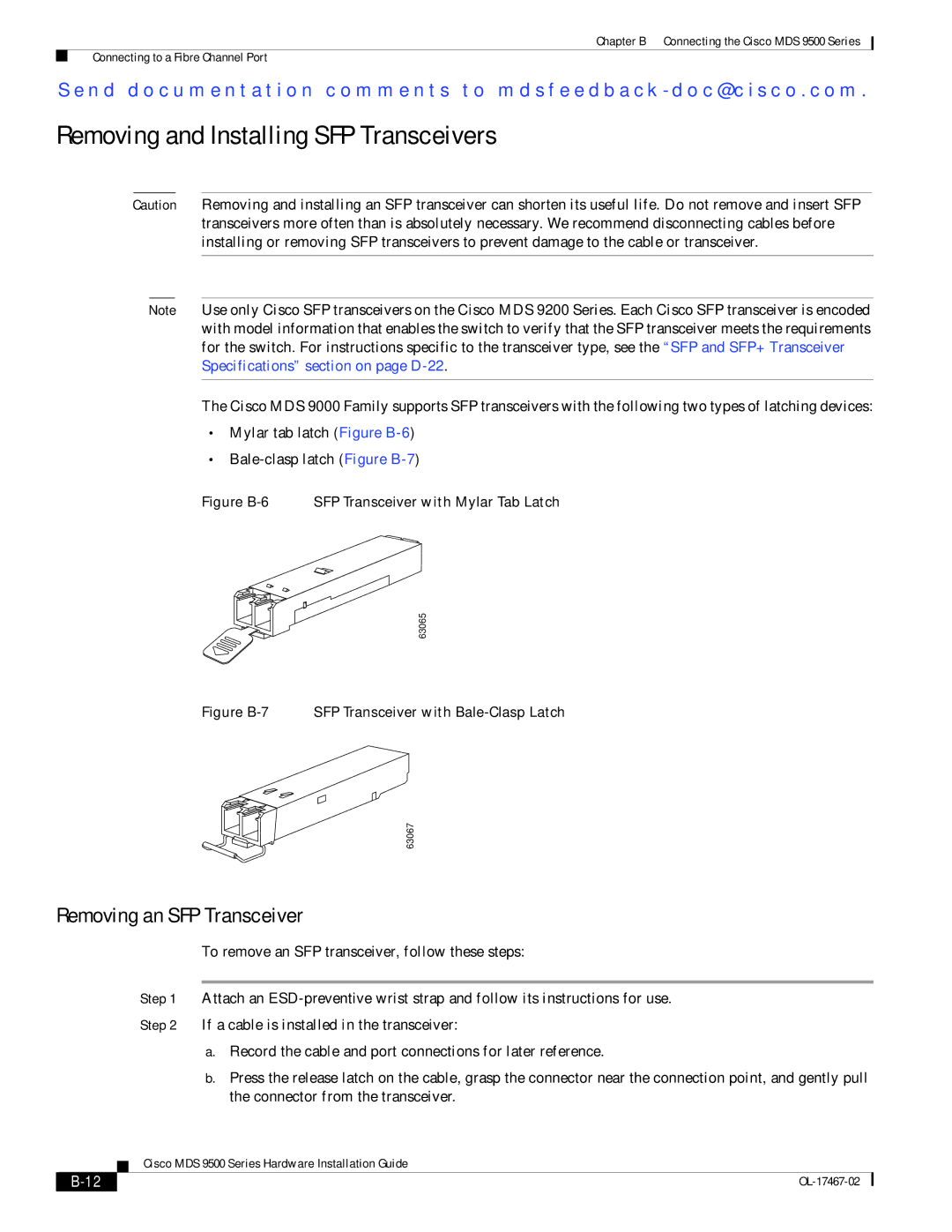
Chapter B Connecting the Cisco MDS 9500 Series
Connecting to a Fibre Channel Port
Se n d d o c u m e n t a t i o n c o m m e n t s t o m d s f e e d b a ck - d o c @ c i s c o . c o m .
Removing and Installing SFP Transceivers
Caution Removing and installing an SFP transceiver can shorten its useful life. Do not remove and insert SFP transceivers more often than is absolutely necessary. We recommend disconnecting cables before installing or removing SFP transceivers to prevent damage to the cable or transceiver.
Note Use only Cisco SFP transceivers on the Cisco MDS 9200 Series. Each Cisco SFP transceiver is encoded with model information that enables the switch to verify that the SFP transceiver meets the requirements for the switch. For instructions specific to the transceiver type, see the “SFP and SFP+ Transceiver Specifications” section on page
The Cisco MDS 9000 Family supports SFP transceivers with the following two types of latching devices:
•Mylar tab latch (Figure
•
Figure B-6 SFP Transceiver with Mylar Tab Latch
63065
Figure B-7 SFP Transceiver with Bale-Clasp Latch
63067
Removing an SFP Transceiver
To remove an SFP transceiver, follow these steps:
Step 1 Attach an
Step 2 If a cable is installed in the transceiver:
a.Record the cable and port connections for later reference.
b.Press the release latch on the cable, grasp the connector near the connection point, and gently pull the connector from the transceiver.
| Cisco MDS 9500 Series Hardware Installation Guide |
